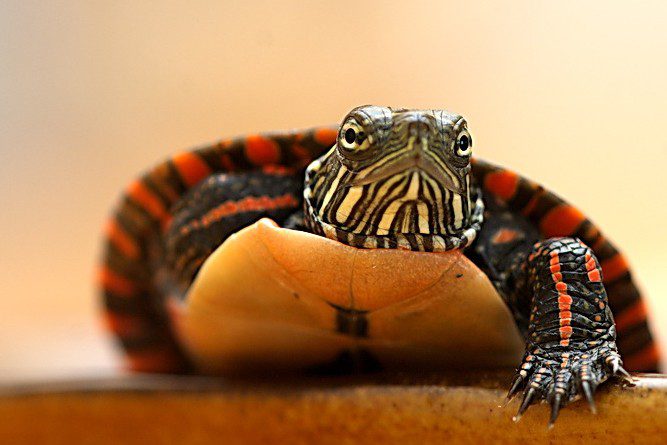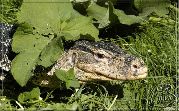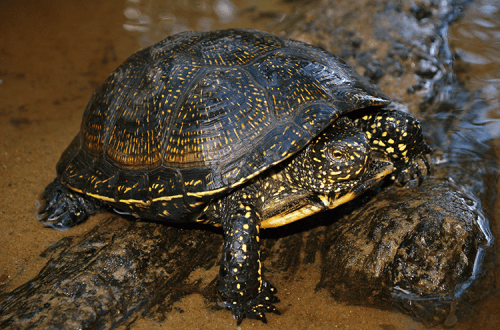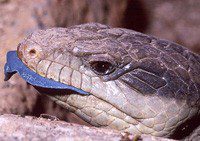
Decorated painted turtle
Freshwater beauties living in the rivers and lakes of Canada and the USA.
The painted turtle (also called the decorated turtle) belongs to the family of American freshwater turtles. The turtle owes its name to its appearance: the graceful stripes on its body and shell seem to be drawn with a brush. We can say that these reptiles are miniature. The length of the shell of an adult turtle is 10-20 cm, the record is 25 cm. Compare with, the shell of which is all 45 cm! Females are slightly larger than males.
The upper part of the carapace (carapace) is oval, smooth, flattened. Gamma color of the body and shell: from dark green to black; stripes are yellow, red or orange. Each subspecies has its own structure and pattern on the shell. So, in Chrysemys picta dorsalis, a red stripe stretches through the carapace, and in Chrysemys picta marginata, a silvery spot on the plastron (lower part of the shell).

The average lifespan of a decorated turtle varies from 15 to 25 years.
About 20 years ago, the decorated turtle as a pet was the second most popular after the red-eared turtle. However, mass capture for commercial purposes has led to a decrease in their numbers, and in some states they began to ban the trade in painted turtles and their transportation. Today, these pets are still exotic.
In general, the conditions of keeping are the same as those of the red-eared turtles. The main thing is that the aquaterrarium is spacious, that it has an island of land with sources of heat and light, safe plants and decorative branches, that the water is regularly updated, that the food is suitable and balanced. Recommended temperature in the aquarium: 24-27°C.
Decorated turtles are quite independent in character. They do not like to be touched or picked up. Therefore, they are not recommended for families with children.

In the wild, decorated turtles are found in Canada and the United States. This is the most common turtle species in North America.
American freshwater tortoises live mainly in stagnant shallow waters, but also develop flowing rivers with a muddy bottom and abundant vegetation. They love to bask and often get out on cliffs or fallen trees in the water. They hibernate for the winter.





